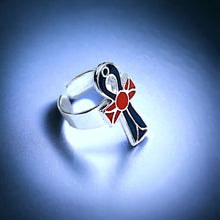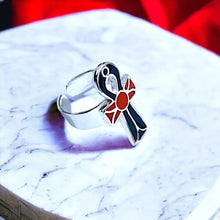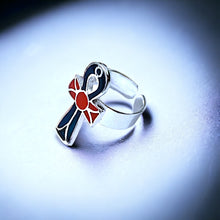
Unlock timeless elegance with the Key of Life Ankh adjustable silver ring. Inspired by the ancient Egyptian symbol of life, this ring intertwines history and style, offering a personalized fit for modern adornment.
- History: Ancient Egyptian symbol, dates back to around 3,000 BCE.
- Spiritually: Represents life, immortality, and rebirth.
- Talisman: Carries protective qualities, believed to ward off negative energy.
- Handmade: Crafted with care and attention to detail.
- Healing: Thought to promote well-being and spiritual growth.
- Material Silver: Sterling silver, a durable and precious metal.
- Symbolism: Combines key (life) and ankh (eternal life) symbols.
- How to Wear: Adjustable design for comfortable fit on any finger.
- Key of Life Ankh Adjustable Silver Ring: A timeless piece blending history, spirituality, and style.
History Side For Those Who Are Interested
The Egyptian Key of Life, commonly known as the Ankh, holds a rich and enduring history deeply intertwined with the cultural, spiritual, and religious fabric of ancient Egypt.
Originating in the early dynastic period (circa 3150–2613 BCE), the Ankh symbolizes life, immortality, and eternity. Its distinctive form resembles a cross with a loop at the top, often interpreted as a key or a knot, representing the concept of eternal life and the interconnectedness of existence.
The precise origins of the Ankh remain shrouded in mystery, but its symbolism and usage became widespread across ancient Egyptian society. Initially associated with deities such as Osiris, the god of the afterlife, and Hathor, the goddess of love and fertility, the Ankh evolved to encompass broader spiritual significance.
Throughout Egyptian history, the Ankh transcended its religious connotations to become a symbol of power, protection, and prosperity. It adorned the tombs of pharaohs, serving as a conduit between the mortal world and the afterlife, ensuring the continuity of life beyond death. The Ankh was often depicted in the hands of gods and goddesses, emphasizing their role as bestowers of life and guardians of the deceased.
Beyond its religious and funerary contexts, the Ankh permeated various aspects of Egyptian life, appearing in art, jewelry, hieroglyphs, and architecture. Its ubiquitous presence underscored the Egyptians' deep reverence for the sanctity of life and their enduring quest for immortality.
During the Ptolemaic and Roman periods, the Ankh continued to hold significance, albeit alongside the influx of foreign influences. Its symbolism remained potent, persisting in Egyptian iconography and religious practices despite the cultural shifts brought about by successive foreign dominations.
In the modern era, the Ankh has transcended its ancient origins to become a globally recognized symbol, embraced by diverse communities for its timeless message of life, renewal, and interconnectedness. Its enduring legacy serves as a testament to the enduring power of ancient Egyptian civilization and its profound contributions to human history and spirituality.













